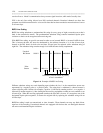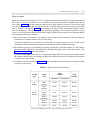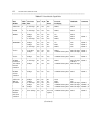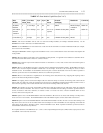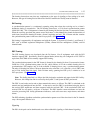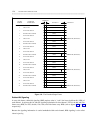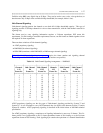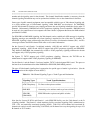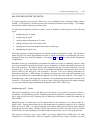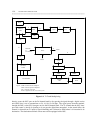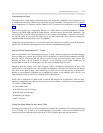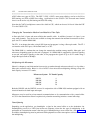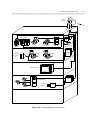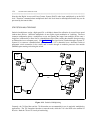1-28 MULTIPLEXED COMMUNICATION
_ ___________________________________________________________________________________________________________________________
_ ___________________________________________________________________________________________________________________________
_ ___________________________________________________________________________________________________________________________
number and the signaling state for that channel. The channel identification number is necessary since the
channel signaling information may not be synchronized with the voice or data channel that it describes.
Some types of public network equipment were incompatible with this type of 24th-channel signaling and,
as a result, another type of 24th-channel signaling, called DMI-BOS, was developed. For DMI-BOS,
specific 24th-channel bit locations carry framing and alarm data, and signaling information for the other 23
channels. Unfortunately, DMI-BOS and AT&T proprietary signaling are not compatible. DMI-BOS must
be used only for connections to host computers and other vendors’ equipment that meets the DMI technical
specification for BOS.
For ISDN-PRI (or DMI-MOS) signaling, the 24th-channel carries a multibyte LAPD message for signaling.
Signaling messages are transmitted only when signaling is required for one of the other 23 channels. In
ISDN-PRI, signaling is done with messages that consist of a series of information elements (IEs). An IE is
a message written to the PRI D-channel with caller or call-control information.
On the System 85 and Generic 2 traditional modules, ANN11B and ANN11C support only AT&T
proprietary signaling. ANN11D and ANN11E support both AT&T proprietary signaling and DMI-BOS.
They default to DMI-BOS, but automatically switch to AT&T proprietary signaling whenever the distant
end supports only AT&T proprietary signaling.
On System 75, TN722 supports only AT&T proprietary signaling. However, the TN722B can be
administered to support either AT&T proprietary signaling or DMI-BOS.
For the Generic 1 and the Generic 2 universal module, TN767 is the designated DS1 board. The ports on
the boards can be administered for either DMI-BOS or ISDN-PRI (DMI-MOS) protocol.
The type of 24th-channel signaling that is appropriate for specific types of trunks is given below. (See the
Trunking section of this chapter for more details.)
Table 1-9. 24th-Channel Signaling Types vs Trunk Types and Destinations
_ ______________________________________________________________
Signaling Types Trunk Types/Destinations
_ ______________________________________________________________
_ ______________________________________________________________
AT&T Proprietary Tie lines to other private switches
_ ______________________________________________________________
DMI-BOS Alternating voice and data trunks to private switches
_ ______________________________________________________________
ISDN PRI ISDN-PRI trunks to private and public switches
(DMI-MOS)
_ ______________________________________________________________
Note that for System 85 R2V4 and Generic 1, each ISDN-PRI facility uses the 24th channel as the D
(signaling) channel. The Generic 2 switch introduces facility-associated signaling (FAS) (administered as
23B + 1D), and nonfacility-associated signaling (NFAS). With FAS, the D-channel and associated B-
channels are carried over the same facility; with NFAS, one D-channel can carry the signaling for up to 479
B-channels or 20 T1 trunks.



